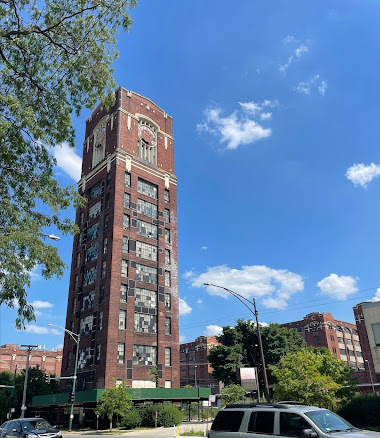The Power of Two Grassroots Organizations in Southwest Side of Chicago
Reflections of an Environmental Justice Site Visit during the 2024 HIP Conference
Hola! I’m Natalia, the climate action summer intern for HIP. I am currently studying environmental economics at Middlebury College and recently had the opportunity to join HIP conference attendees on an environmental justice site visit to Gage Park and McKinley Park in Chicago. As a current student, I had a slightly different experience from the other attendees, but we all walked away with a profound perspective that could only be achieved from being in person. The site visit was guided by two grassroots organizations, Gage Park LatinX Council (GPLCX) and Neighbors for Environmental Justice (N4EJ). On our way to McKinley Park, our host Myrna Salgado-Romo set the stage for us by providing some background for GPLXC and N4EJ and the work they have done so far.
As we stepped into McKinley Park, everyone started to comment to each other about the factory smells circulating the air. Alfredo Romo from N4EJ pointed our gaze across the street. It was the epitome of irresponsible actions by the local government on zoning decisions that a beautiful park found itself next to the MAT asphalt facility. As we listened to the trucks that drove in and out of the plant leaving clouds of smoke in the wind, Alfredo described the environmental consequences that the community had to pay for these industrial projects.

That’s why N4EJ has been working so hard to address these issues with a campaign that directly applies pressure against the asphalt plant. N4EJ learned about the permitting process at the state level and zoning at the city level, and the challenges in advocating for addressing zoning and racist practices. Myrna and Alfredo discussed the importance of cumulative impact reports, as it is impossible for industrial projects such as MAT asphalt to contain their pollution. You can read more about their campaign here.
Treated to lemonade, we boarded the buses and our attention was turned over to Antonio Santos from Gage Park Latinx Council. On our way to their headquarters, he explained the necessary means of simple actions as a slow way to radicalize. Antonio explained that only when people in his community can access basic needs, then other goals can be completed. GPLXC is the only independently run food pantry in the area, providing meals for about 500 people. The food comes from community growers that represent culturally reflective food of the area. From there, GPLXC became a community hub to support and make projects a reality. They are constantly asking themselves: “How are we taking care of the entire community?” Antonio highlights how this space allows for community members to lift each other up and discuss what is needed. Recently, they opened another location called Bienestar, that is dedicated to the health of mind, body, and spirit of community members.
I’m always in a classroom, and as an environmental studies student, I feel like sometimes I’m stuck in a doomsday narrative where all I’m learning about are environmental problems that are exacerbating systemic challenges in our society, ranging from food insecurity to racial discrimination to big oil companies that are still denying climate change. But here I was, talking to three people who decided to take these challenges into their own hands and work to make positive change in their communities. I still feel truly inspired and hopeful as I am reminded that I do in fact have a voice.
If we bring the voices of communities together, we really do have power. As Antonio said,
“You need to congregate in order to dream and in order to build in your community.”
